Mining Cutting Machines: Technology and Cable Installation Requirements
Ensure optimal performance and longevity of your mining equipment with expert insights on Types of Mining Cutting Machines and tailored trailing cable solutions—covering abrasion resistance, flex life, tensile management, and EMI shielding for every application.
Mining Cutting Machines: Technology and Cable Installation Requirements
In the demanding world of modern mining operations, cutting machines represent the critical interface between raw earth and mineral extraction. These sophisticated systems transform the ancient practice of mining into a precise science, but their effectiveness relies heavily on robust power delivery systems—particularly trailing cables that must withstand extreme conditions. This article explores the diverse landscape of mining cutting technologies and the specialized cable requirements that keep these mechanical giants operational.
The Critical Role of Trailing Cables
Trailing cables serve as the lifeline for mobile mining equipment, delivering electrical power while accommodating continuous movement. Unlike fixed industrial installations, these specialized cables face unique challenges:
Constant flexing as machines maneuver through mining environments
Abrasion against rock surfaces and machine components
Impact damage from falling debris and rock fragments
Environmental exposure to moisture, dust, and corrosive materials
Temperature fluctuations from ambient conditions and motor heat
A well-designed trailing cable must balance electrical performance with mechanical durability, featuring optimized tensile strength, insulation integrity, and minimum bending radius specifications tailored to specific machine applications.
Major Classes of Mining Cutting Machines
1. Continuous Miners
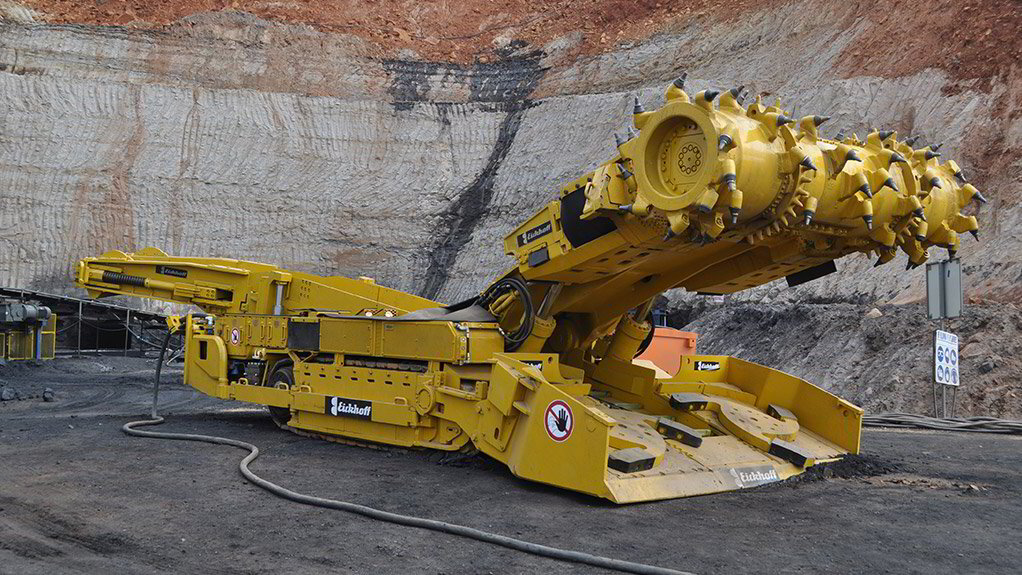

Purpose: These versatile machines simultaneously cut, gather, and load material in underground mining operations.
Technical Features:
High-torque rotating drum with carbide-tipped cutting bits
Integrated conveyor system for immediate material removal
Compact design for tight-radius operation in confined spaces
Cable Requirements:
Enhanced flex life for continuous operation
Abrasion-resistant jacketing at identified wear points
Robust strain relief to handle frequent direction changes
Fire-resistant compounds for coal mine environments
Application Focus: Coal mining, potash extraction, salt mining, and other soft mineral operations.
2. Roadheaders
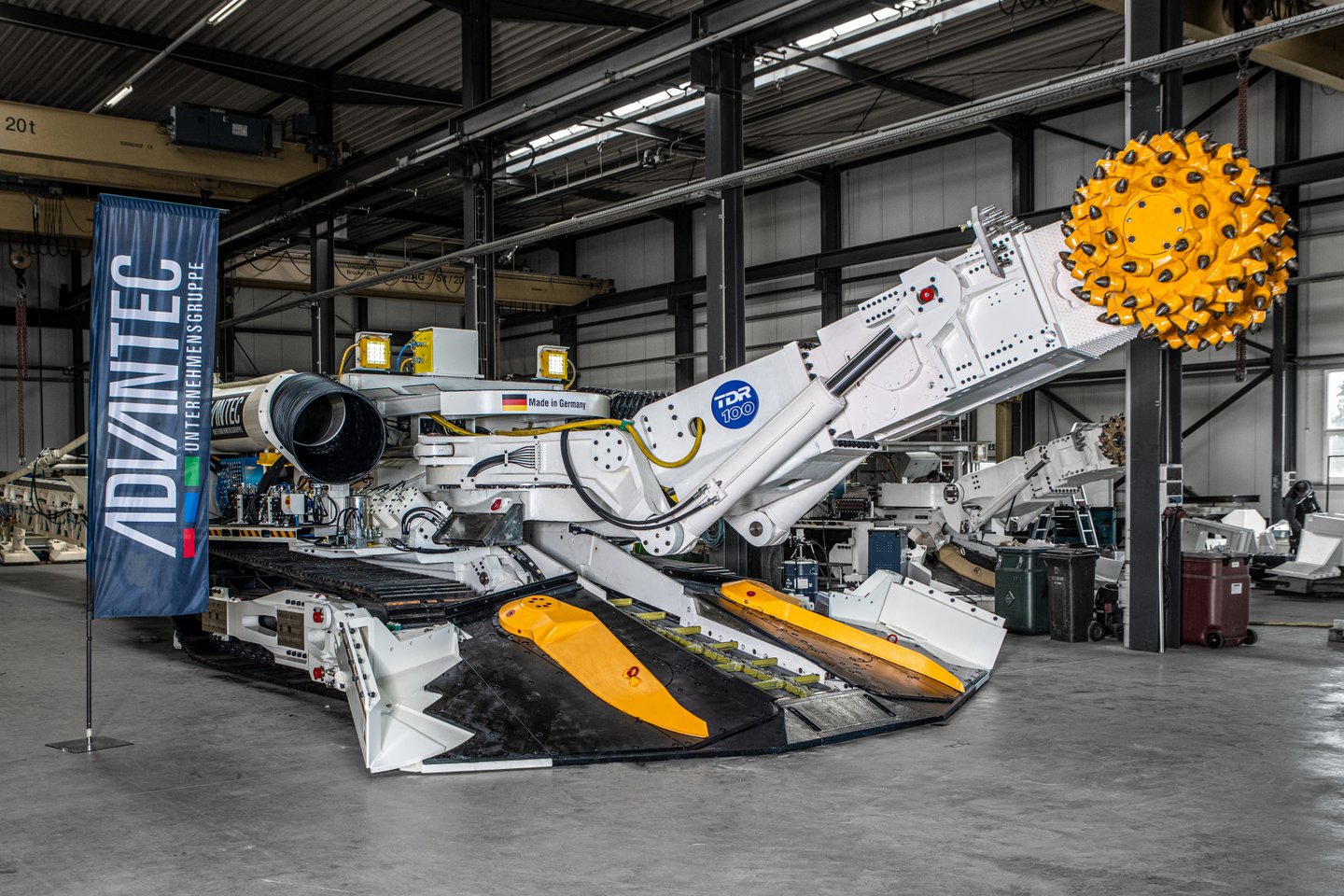

Purpose: Versatile excavators designed for precision rock cutting in tunneling and underground mining.
Technical Features:
Articulating boom with rotating cutting head
Adjustable for precise cutting angles and profiles
Interchangeable cutting picks for different material hardness
Cable Requirements:
Variable geometry accommodation with maintained electrical integrity
Specialized suspension systems to reduce ground contact
Multi-layer protection for repetitive bending stress
EMI shielding for sensitive control systems
Application Focus: Tunnel construction, roadway excavation, and medium-hard rock mining operations.
3. Longwall Shearers
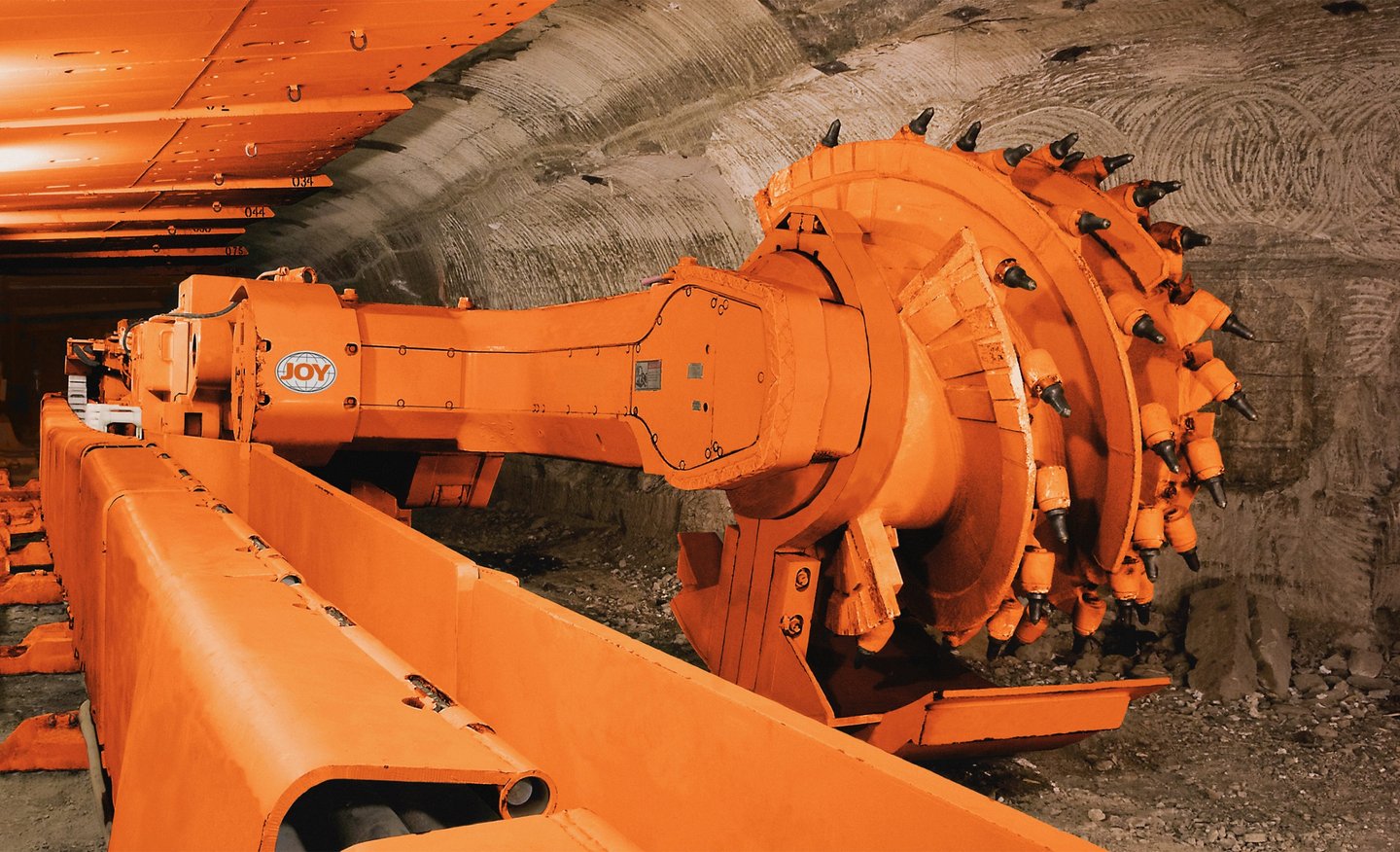

Purpose: High-capacity extraction units that form the core of longwall mining systems.
Technical Features:
Dual rotating cutting drums for efficient material removal
Rail-mounted design for controlled face advancement
Integrated hydraulic roof support coordination
Cable Requirements:
Heavy-duty tensile load capacity
Dynamic tension control systems
Protective armoring against rock face contact
Enhanced shielding for high-power motor applications
Application Focus: Large-scale coal face extraction in longwall panel systems.
4. Drum Cutters
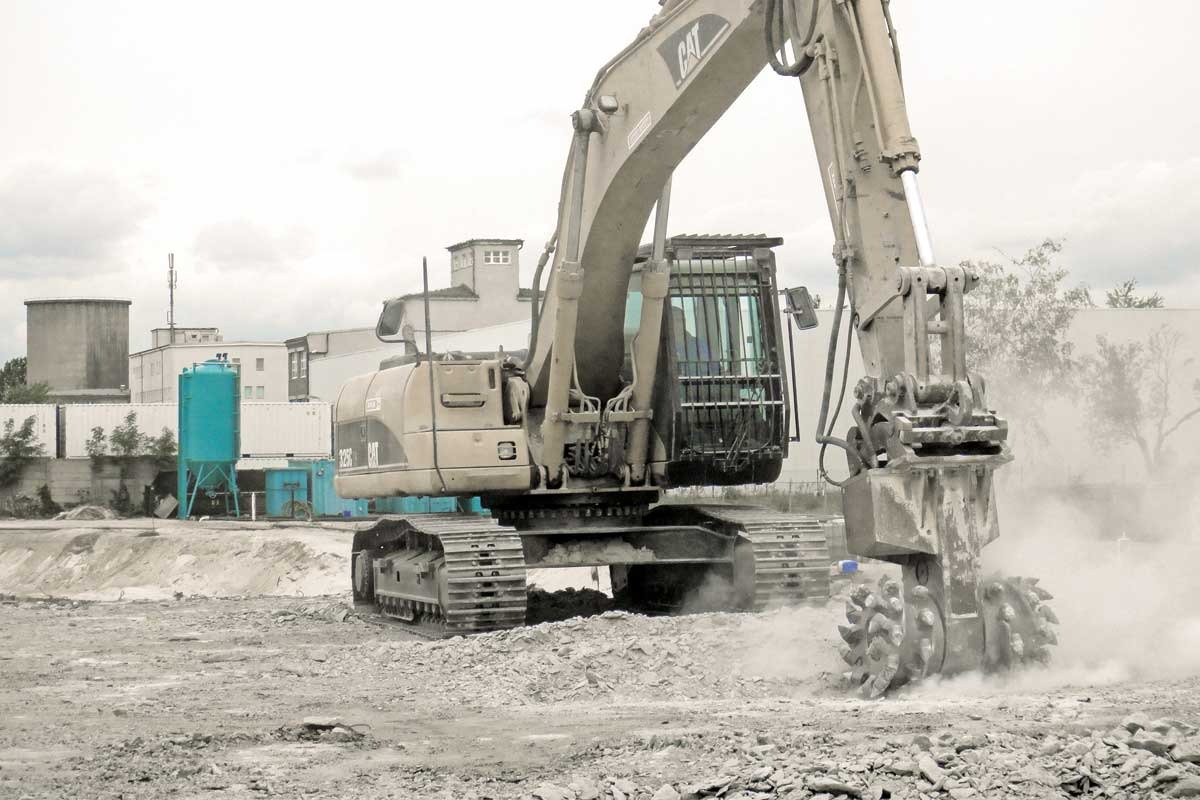

Purpose: Compact cutting attachments that offer precise rock or soil profiling.
Technical Features:
Rotating drum with carbide-tipped teeth mounted on excavator arms
Modular tool configurations for different material types
Low-vibration design for controlled excavation
Cable Requirements:
Protection against localized abrasion points
Sharp-radius bend tolerance for equipment articulation
Quick-disconnect systems for attachment changes
Abrasion-resistant outer jacketing
Application Focus: Tunneling, trenching, and scaling operations in mining and construction.
5. Surface Miners
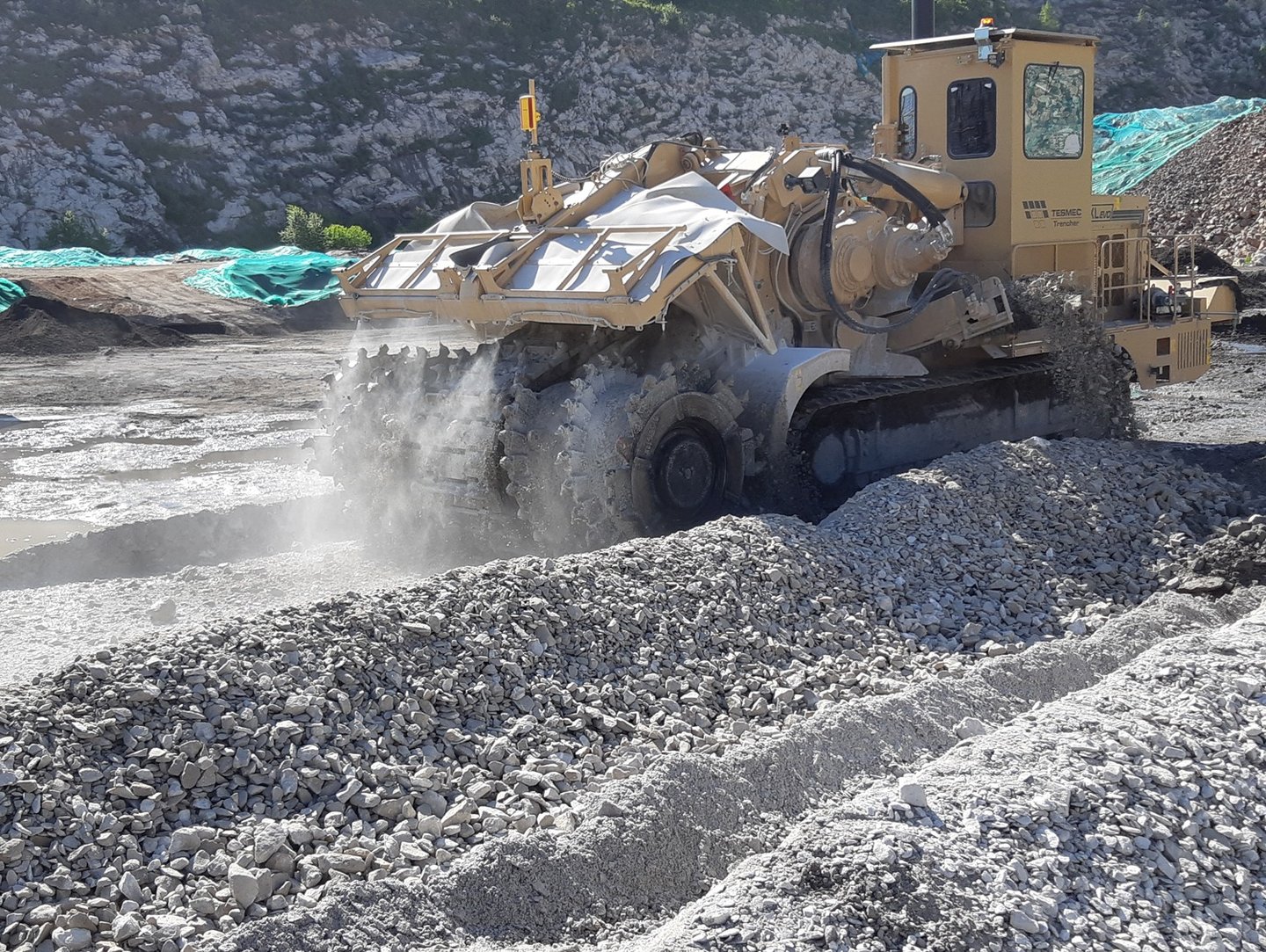

Purpose: Open-pit extraction machines that combine cutting, crushing, and loading functions.
Technical Features:
Massive cutting drum with specialized teeth patterns
Integrated material size control and conveyance
High-durability components for continuous operation
Cable Requirements:
Long-span bend support with minimal strain
UV and environmental exposure protection
Heavy-duty strain relief for substantial power demands
Dust-resistant connector interfaces
Application Focus: Limestone, coal, gypsum, and iron ore extraction in surface operations.
6. Tunnel Boring Machines (TBMs)
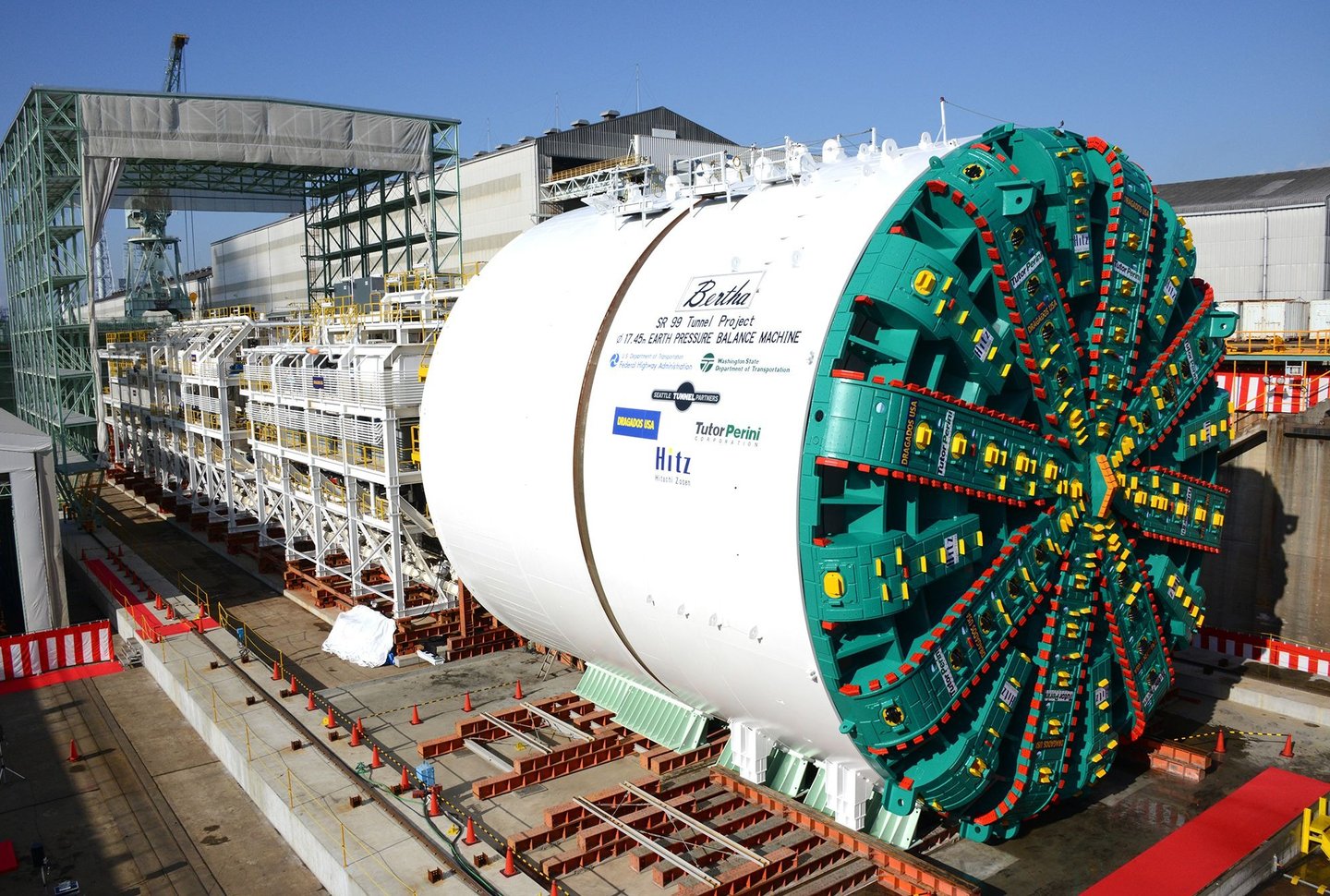

Purpose: Large-diameter tunnel construction systems for both soft and hard rock applications.
Technical Features:
Rotating cutter head with disc cutters for rock fragmentation
Segment erector systems for tunnel support installation
Advanced guidance and navigation capabilities
Cable Requirements:
Extended cable trains with multi-point support
Water and pressure resistance for wet tunneling
Remote routing systems with centralized monitoring
High-flex material compounds for continuous operation
Application Focus: Major infrastructure tunneling and mine access development.
7. Bolter Miners
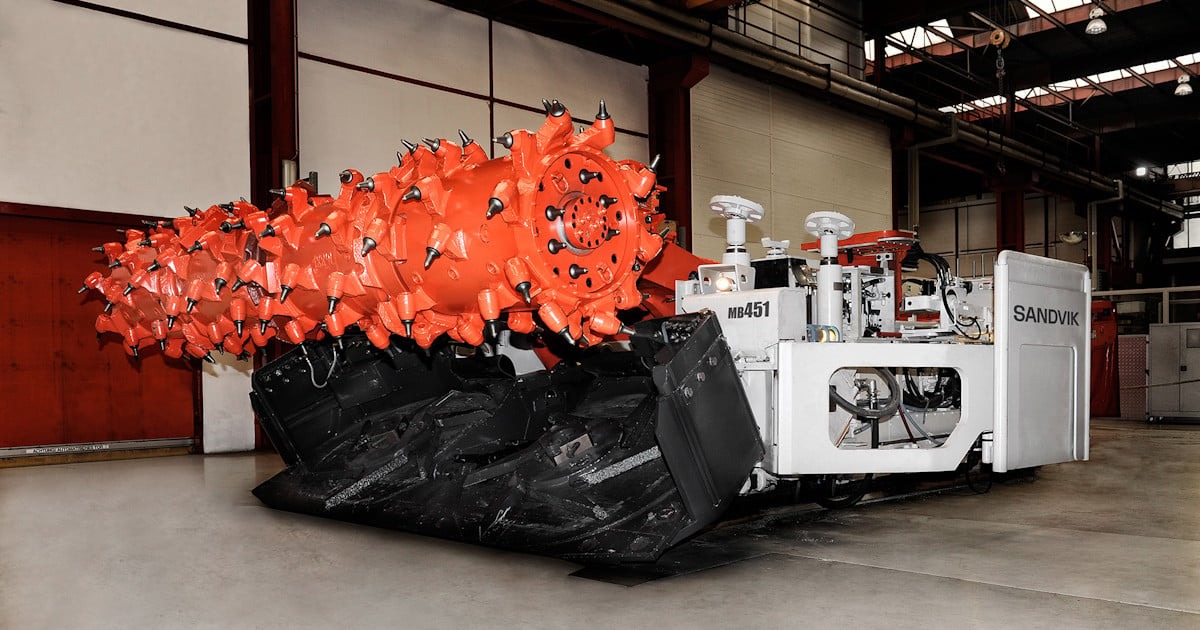

Purpose: Combined excavation and roof support systems for single-pass mining.
Technical Features:
Integrated cutting head and roof bolting equipment
Resin injection systems for immediate ground control
Dust suppression technology for improved safety
Cable Requirements:
Abrupt stop/start cycle tolerance
High-flex joint protection at articulation points
Fire-resistant jacketing for coal applications
Reinforced connection points for operational vibration
Application Focus: Underground coal or soft rock mining requiring immediate roof support.
8. Chain Cutters
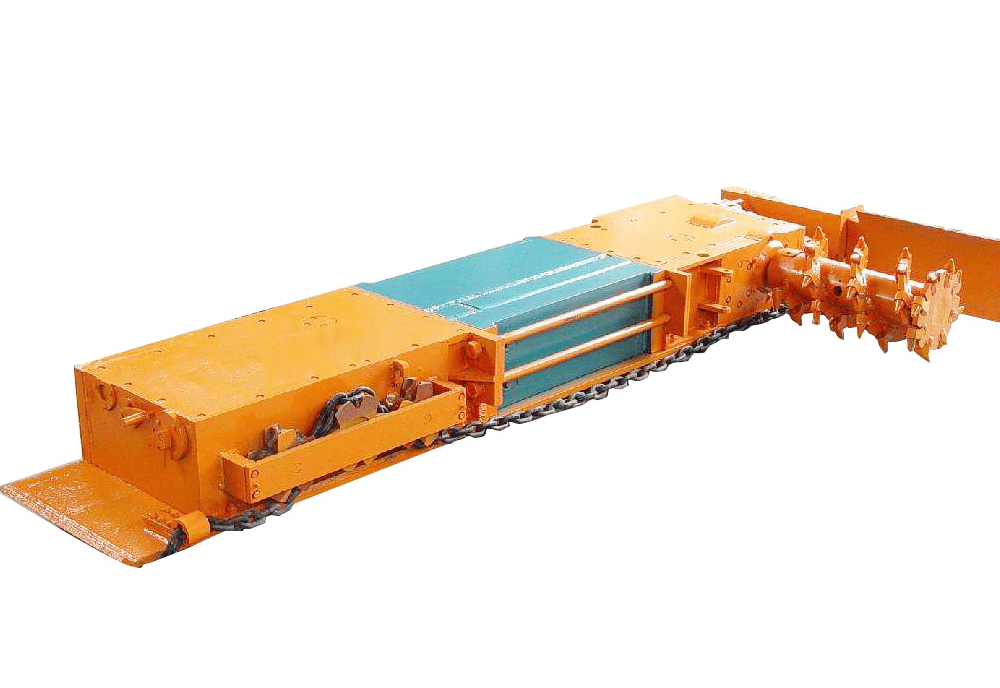

Purpose: Precision tools for extracting thin seams or specific stratigraphic layers.
Technical Features:
Chainsaw-style cutting mechanism with replaceable teeth
Lightweight frame for manual positioning
Variable chain speed for different material hardness
Cable Requirements:
Superior flexibility for operator-guided movement
Small-radius bend tolerance without electrical compromise
Abrasion protection at guide contact points
Lightweight design without sacrificing durability
Application Focus: Selective mining in confined spaces and thin coal seam extraction.
9. Rock Saws
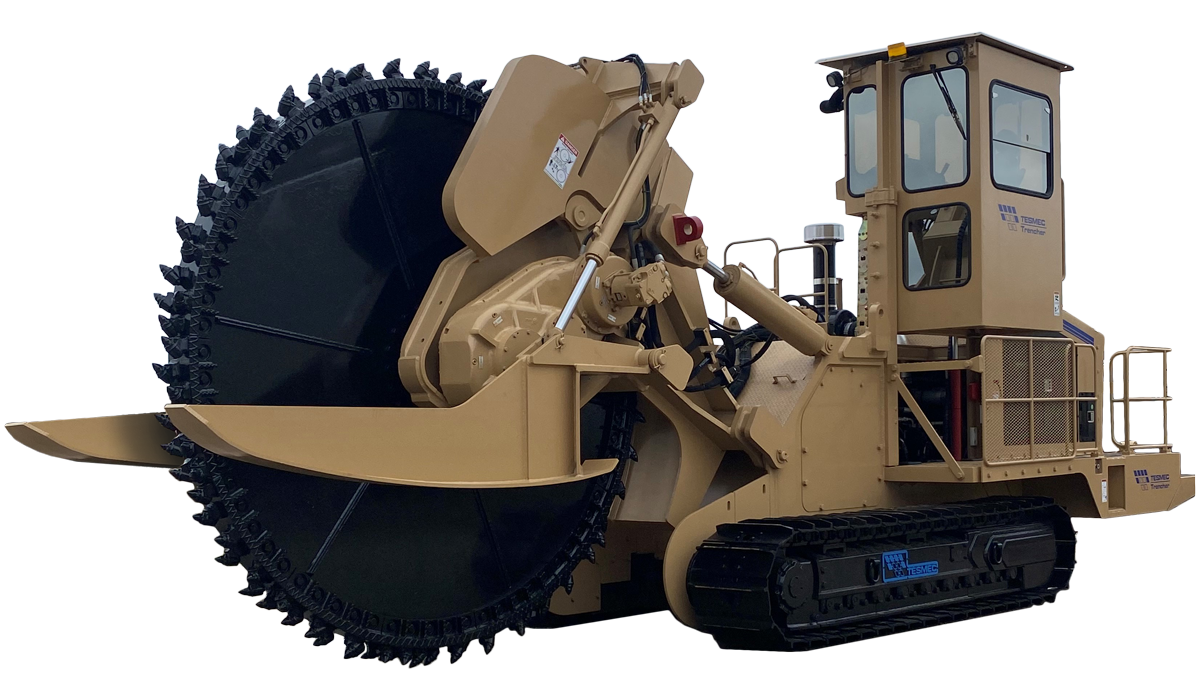

Purpose: Precision cutting tools for dimensional stone and specialized mining applications.
Technical Features:
Diamond-tipped circular blades for clean cutting
Water cooling systems to manage heat generation
Frame stabilization for precise cut control
Cable Requirements:
Water ingress protection with sealed connector systems
Torsional load resistance for blade rotation forces
Reinforced insulation against wet operating conditions
Chemical resistance for coolant exposure
Application Focus: Quarrying, dimension stone extraction, and precision mining operations.
10. Water-Jet Cutting Machines
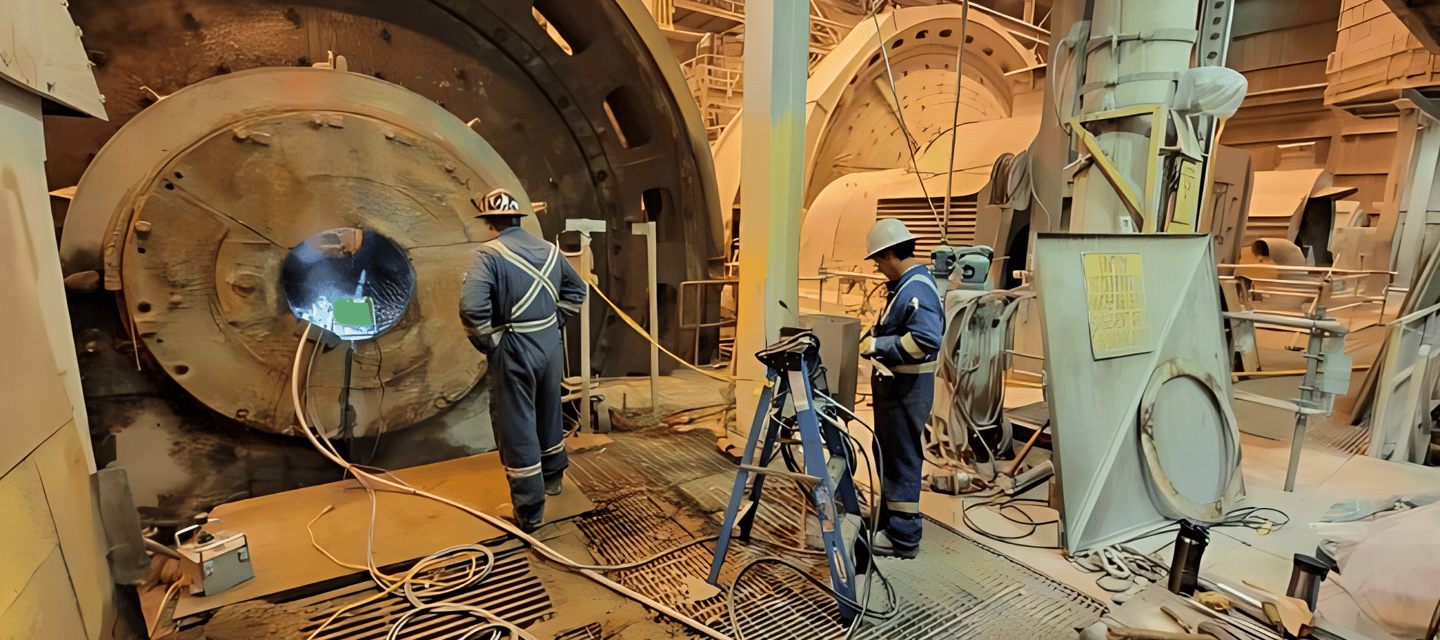

Purpose: Non-thermal, non-spark cutting systems for sensitive or hazardous materials.
Technical Features:
High-pressure water pumps (up to 60,000 psi)
Abrasive mixing for enhanced cutting capability
Remote-controlled cutting head for operator safety
Cable Requirements:
Hydrostatic pressure resistance for submerged operation
Abrasion protection against water/abrasive slurries
Chemical-resistant jacketing for various water treatments
Multi-conductor design for complex control functions
Application Focus: Coal extraction in methane-rich environments and other explosion-sensitive contexts.
11. Auger Miners
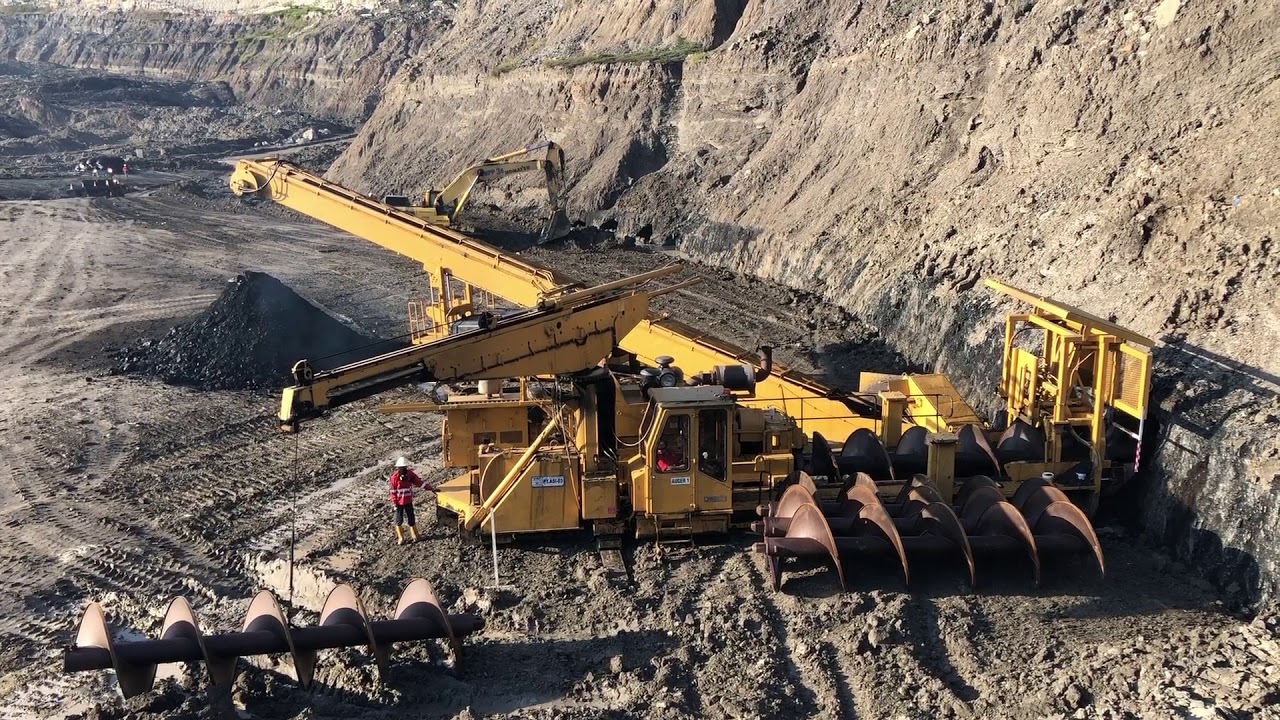

Purpose: Horizontal seam extraction using helical cutting and conveying technology.
Technical Features:
Continuous flight auger for simultaneous cutting and material removal
Sliding shoe guides for controlled penetration
Compact design for remote seam access
Cable Requirements:
Torsional stress resistance for auger rotation
Confined-space routing capabilities
Low-temperature flexibility for various climates
Dual-rated electrical/mechanical specifications
Application Focus: Surface or highwall coal mining in horizontal or slightly inclined seams.
12. Rock Excavation Robots
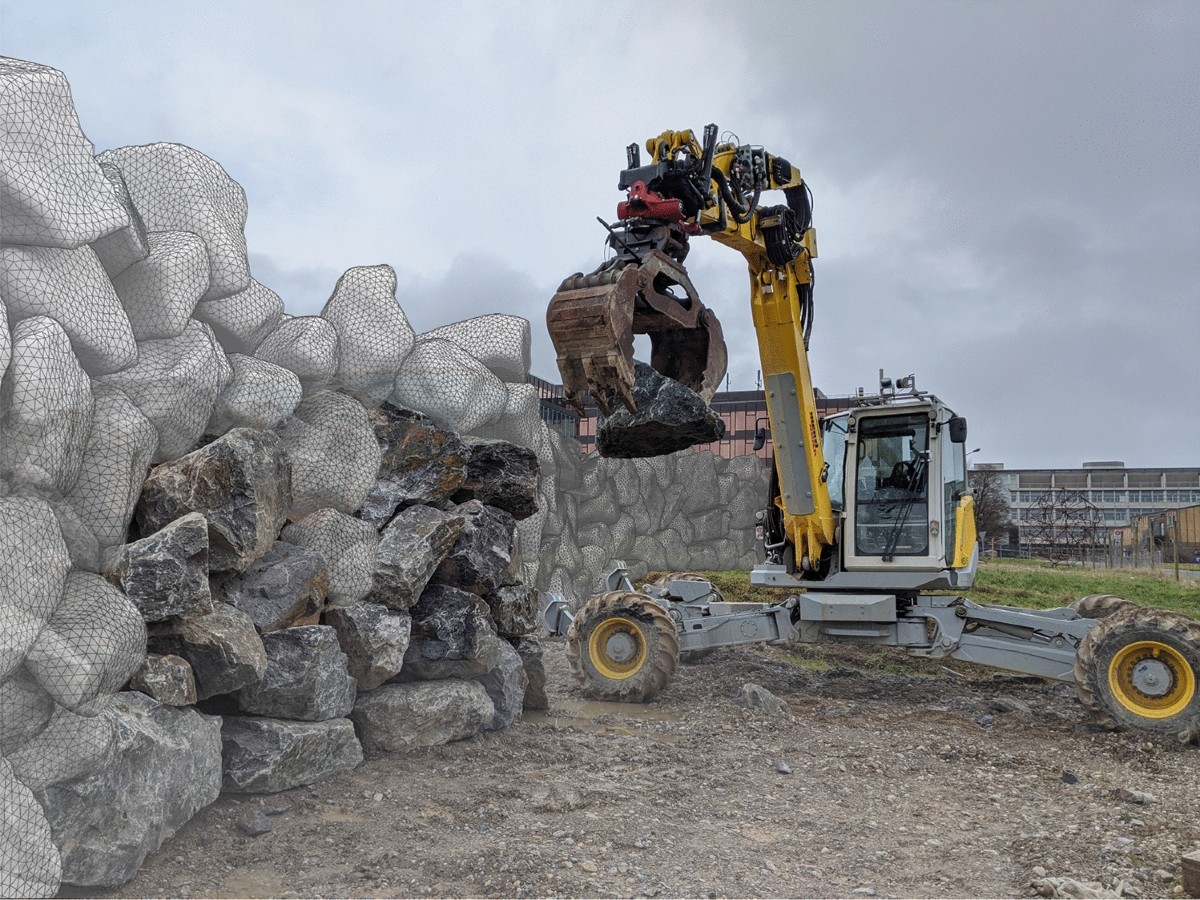

Purpose: Remote-controlled or autonomous cutting systems for hazardous environments.
Technical Features:
Multi-axis robotic arms with specialized cutting tools
Advanced sensor packages for navigation and material detection
Modular design for different cutting attachments
Cable Requirements:
Frequent coupling/decoupling durability
Multi-core designs with integrated signal and power conductors
Enhanced EMI shielding for sensitive control systems
Reinforced armor for unpredictable movement paths
Application Focus: Hazardous zones, unstable ground conditions, and hard-to-reach mining locations.
Technical Considerations for Cable Integration
Abrasion Resistance
The constant movement of mining equipment creates significant abrasion challenges for trailing cables. Modern designs incorporate:
Advanced polymer compounds with high abrasion indices
Braided protective sleeving at identified wear points
Aramid fiber reinforcement in high-stress applications
Removable protective covers for maintenance access
Flex Life Optimization
Cable flex life directly impacts operational continuity and safety. Key considerations include:
Stranded conductor designs with optimized lay lengths
Specialized insulation materials with superior flex memory
Validated minimum bending radius specifications
Cyclic fatigue testing under simulated mining conditions
Tensile Load Management
Different cutting machines exert varying tensile forces on their power cables:
Reinforced strain relief connections at machine interfaces
Internal strength members sized to specific machine pull forces
Load-distributing jacket designs to prevent conductor stress
Tension monitoring systems for preventive maintenance
Thermal Management
Heat generation impacts both cable lifespan and safety:
Temperature-rated insulation materials appropriate for application
Ventilated cable carrier systems for improved heat dissipation
Strategic routing to minimize exposure to motor and friction heat
Thermal imaging as part of routine maintenance protocols
Selection Criteria: Matching Machines with Cables
Proper cable selection requires careful evaluation of multiple factors:
Environmental conditions (wet/dry, abrasive, temperature extremes)
Machine mobility patterns (linear, circular, multi-axis)
Production rate and duty cycle requirements
Material hardness and its impact on machine vibration
Operational speed and resulting flex-cycle frequency
Maintenance access considerations for cable replacement
Regulatory compliance for specific mining environments
Installation Best Practices
Pre-Installation Inspection
Before deployment, cables should undergo:
Visual examination for shipping damage
Verification of sheath integrity
Conductor continuity testing
Insulation resistance measurement
Dimensional compliance checking
Strategic Routing
Proper cable management systems significantly extend service life:
Engineered cable trays with appropriate support spacing
Overhead festoon systems for suspended operation
Floor troughs with abrasion-resistant liners
Articulated cable carriers for complex movement patterns
Strain Relief Implementation
Critical protection at machine connection points includes:
Spring-loaded tension devices
Automated cable retractors for slack management
Load cells for continuous tension monitoring
Pivoting connection points to maintain optimal bend radius
Maintenance and Testing Protocols
Routine Inspection
Regular examination should include:
Visual checks for jacket damage
Sheath thickness measurement at wear points
Resistance testing for early degradation detection
Connection point inspection for thermal stress
Non-Destructive Evaluation
Advanced testing methods provide early warning of developing issues:
Ultrasonic flaw detection for internal damage
High-voltage spark testing for insulation integrity
Thermal imaging for hot spot identification
Partial discharge analysis for insulation degradation
Conclusion
The demanding environments of modern mining operations require cutting machines that combine robust performance with operational reliability. The trailing cables that power these systems represent a critical component that must be carefully selected, properly installed, and diligently maintained. By understanding the specific requirements of each cutting machine type and implementing appropriate cable management strategies, mining operations can maximize productivity while enhancing safety and equipment longevity.
For project-specific cable system solutions, consult with specialized engineering teams who can provide custom jacketing, armoring, and on-site support tailored to your unique mining environment.
This article was prepared by experts in mining equipment and electrical systems to provide technical guidance for engineers, maintenance crews, safety officers, and cable specialists working with mining cutting machinery.
Frequently Asked Questions (FAQ)
Machine Types
What is a Continuous Miner?
A continuous miner is a machine that cuts and loads coal in one continuous operation, eliminating the need for separate drilling and blasting steps 韦氏词典.What is a Roadheader?
A roadheader is excavating equipment consisting of a boom-mounted cutting head, a conveyor loading system, and crawler tracks, used for precise tunnel and underground excavation in soft to medium rock Wikipedia.What is a Longwall Shearer?
A longwall shearer is a high-capacity machine with one or two rotating cutting drums that traverse the coal face, slicing coal which falls onto an armored face conveyor for removal Wikipedia.What is a Drum Cutter?
A drum cutter is an excavator attachment featuring rotating drums equipped with picks, driven by hydraulic motors to precisely cut rock, concrete, frozen ground, and other hard materials Epiroc.What is a Surface Miner?
A surface miner is a continuously operating mobile milling machine with a centrally mounted cutting drum, used in open-pit extraction to cut and load minerals row by row without drilling or blasting www.slideshare.net.What is a Tunnel Boring Machine (TBM)?
A TBM, also known as a “mole,” is a large machine with a rotating cutting head that excavates tunnels in rock or soil, offering a continuous, low-vibration alternative to drilling and blasting Wikipedia.What is a Bolter Miner?
A bolter miner combines excavation and roof-bolting functions in one track-mounted machine, cutting the roadway and installing roof supports simultaneously to streamline underground development MDPI.What is a Chain Cutter?
A chain cutter is a compressed-air or electric machine that drives a cutting chain to undercut or overcut coal seams, facilitating groove formation and material removal in thin or steeply inclined layers Mindat.What is a Rock Saw?
A rock saw is a low-speed, high-torque saw attachment—often tungsten-carbide tipped—used on excavators for precision cutting of rock, stone, concrete, and sensitive environments with minimal vibration Rock Tools Attachments.What is a Water-Jet Cutting Machine?
A water-jet cutter uses a high-pressure stream of water—optionally mixed with abrasives—to cut rock or ore without heat or sparks, ideal for delicate or explosive-risk environments Wikipedia.
Cable Integration & Requirements
What properties ensure optimal abrasion resistance in trailing cables?
High-performance polymer compounds with superior abrasion indices, braided protective sleeving at wear points, and aramid fiber reinforcement significantly enhance cable durability under constant movement tfcable.com.How is flex life optimized for mining trailing cables?
Flex life is maximized by using stranded conductors with optimized lay lengths, specialized insulation materials offering excellent flex memory, and validating minimum bending radius through cyclic fatigue testing Prysmian North America.Why is tensile load management critical for trailing cables?
Reinforced strain-relief connections and internal strength members sized to machine pull forces prevent conductor overstress and maintain electrical continuity under heavy loads minecableservices.ca.What strain relief devices are commonly used in mining cable systems?
Spring-loaded tension devices, load-cell monitoring clamps, and automated retractors protect cable-to-machine terminations from excessive pull and abrupt tension spikes minecableservices.ca.Why is EMI shielding necessary for robotic mining cable control systems?
Integrated braided and foil shields prevent electromagnetic interference from high-power motors and control electronics, ensuring reliable signal integrity for remote or autonomous operations TE连接器.How are multi-core designs integrated for power and signal conductors?
Custom-engineered multi-core cables bundle power and communication cores within a single jacket, optimized for minimal crosstalk and reduced cable diameter in space-restricted applications TE连接器.What design features improve durability under frequent coupling/decoupling?
Heavy-duty molded connectors, reinforced backshells, and overmolded bend reliefs maintain contact integrity and resist mechanical wear during repeated mate cycles imgindustries.com.How should trailing cables be selected and installed per AS/NZS 2802?
Cables must be chosen based on application (e.g., underground vs. surface), meet AS/NZS 2802:2000 specifications for reeling and trailing, and be installed following recommended pull tensions and bend radii Western Australian Government.What pre-installation inspections are recommended for trailing cables?
Verify reel condition, sheath integrity, conductor continuity, insulation resistance, and dimensional compliance before mounting to prevent early failures Western Australian Government.What are best routing practices for mine trailing cables?
Use engineered cable trays with proper support spacing, overhead festoons for mobile rigs, and floor troughs lined with abrasion-resistant materials to control cable paths and reduce wear Western Australian Government.How should cables be secured in overhead festoon systems?
Employ rollers or sliding trolleys with sealed bearings at fixed intervals, maintain proper cable sag, and ensure cable weight is evenly distributed to avoid pinch points Western Australian Government.What environmental conditions affect trailing cable performance?
UV exposure, moisture, chemical contamination, and dust ingress can degrade jacket materials—select cables with resistance ratings matched to site conditions cabledatasheet.com.How do temperature extremes impact trailing cables?
Low temperatures can stiffen insulation, increasing pull forces by up to 25 %; high temperatures accelerate material aging—choose temperature-rated insulations accordingly nz.prysmian.com.How often should trailing cables be inspected in mining operations?
Conduct visual inspections monthly, with wear-point measurements quarterly and electrical testing annually to detect insulation breakdown or conductor flaws Western Australian Government.What should a Trailing Cable Management System include?
A comprehensive system covers cable selection criteria, installation standards, inspection schedules, maintenance procedures, and operator training protocols Western Australian Government.How should damaged cable sections be repaired in the field?
Use factory-approved repair kits, over-molded splice assemblies, and heat-shrinkable jackets, following manufacturer instructions for electrical and mechanical restoration imgindustries.com.What protective accessories are available for cable handling?
Cable clamps, lifting arcs, reel stands, and protective jackets help manage, transport, and shield cables from impact or abrasion during operations imgindustries.com.How can connectors be protected from dust and moisture?
Dust-tight covers, IP-rated boots, and O-ring seals maintain connector integrity in harsh underground or wet environments imgindustries.com.How should trailing cables be stored on-site?
Store reels upright on clean, dry ground; seal ends against moisture; protect from UV; and rotate stock to use oldest cables first Western Australian Government.When is cable replacement necessary?
Replace cables showing sheath cracking, conductor exposure, insulation resistance drop below 50 MΩ, or mechanical damage beyond repair thresholds Western Australian Government.What safety regulations govern handling live trailing cables?
30 CFR § 75.600–75.830 mandates flame-resistant cables and prohibits handling energized cables without insulated gloves or approved tools 电子联邦法规法律信息研究所.How should high-voltage trailing cables be handled?
Operators must wear high-voltage insulating gloves and use insulated handling tools; cables must be de-energized or appropriately guarded during maintenance 法律信息研究所.What personal protective equipment (PPE) is required when handling trailing cables?
Use rubber insulating gloves with leather protectors, dielectric boots, face shields, and arc-rated clothing when working near live cables 法律信息研究所.How do I determine cable sizing for specific equipment voltages?
Refer to manufacturer datasheets—mine trailing cables commonly range from 5 kV to 25 kV and are sized for current capacity and voltage drop requirements cabledatasheet.com.Where can I find detailed manufacturer-specific trailing cable specifications?
Contact cable OEMs such as TE Connectivity for custom multicore designs or download technical catalogs from providers like Prysmian and TF Kable TE连接器nz.prysmian.com.
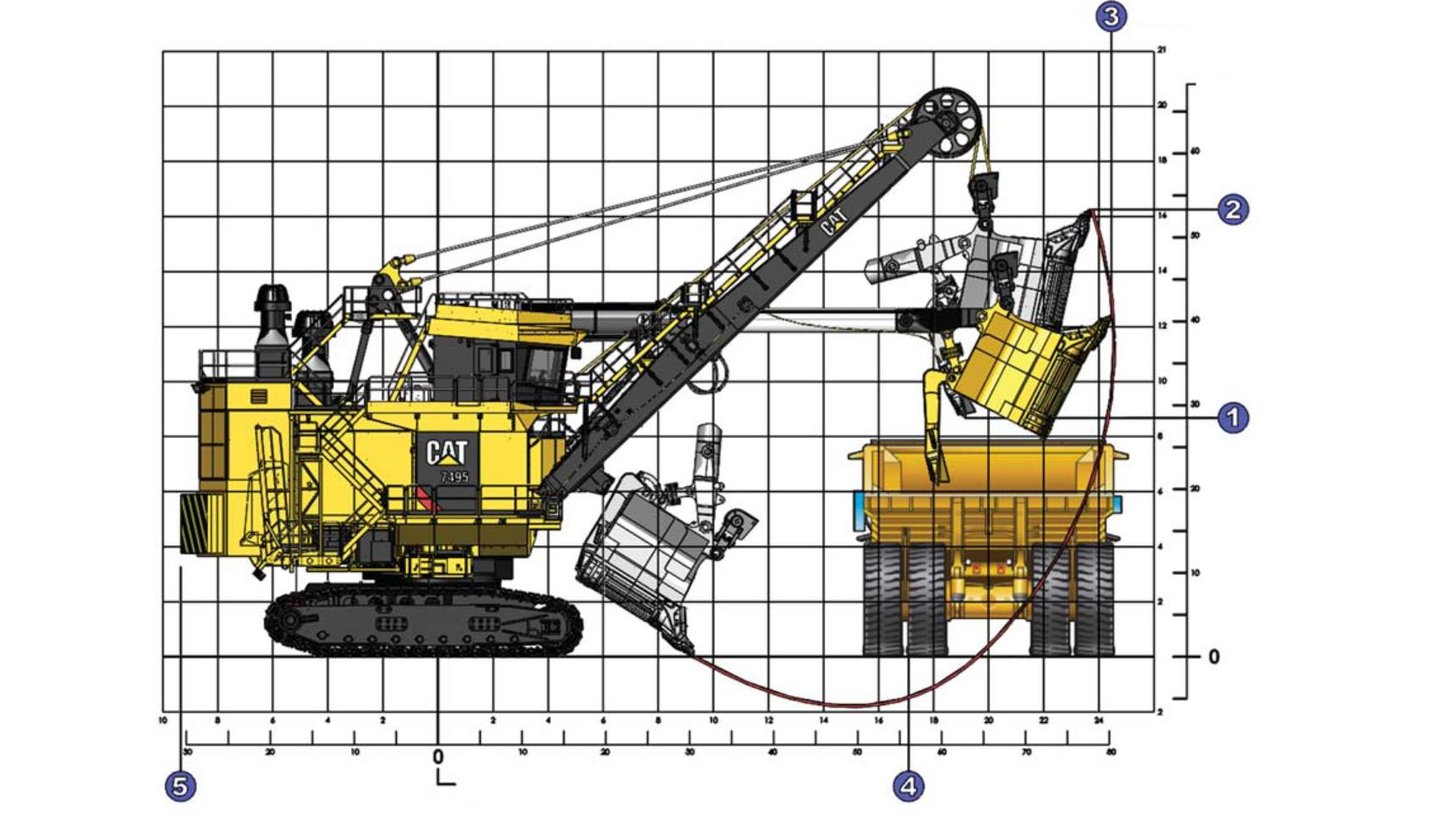

Mining Cutting Machines: Technology and Cable Installation Requirements
Ensure optimal performance and longevity of your mining equipment with expert insights on Types of Mining Cutting Machines and tailored trailing cable solutions—covering abrasion resistance, flex life, tensile management, and EMI shielding for every application.
1/8/202511 min read




